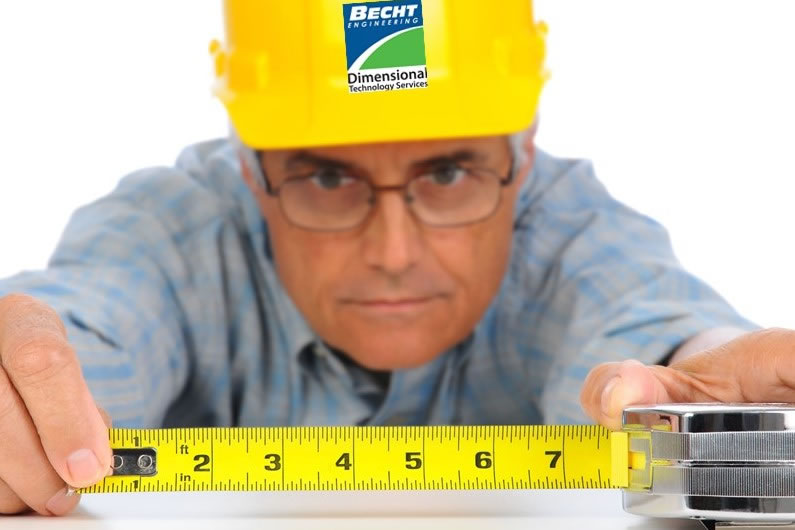A Dimensional Execution Plan – Measure Up To Project Expectations

Plan the Work and Work the Plan
I am confident that we can agree that it is essential for all projects to have an execution plan to be successful. We have all heard the common phrase, “Plan the Work and Work the Plan.” Many have been participants in strategy meetings discussing the most effective and efficient means to execute a plan on capital project work. So why does it seem that in today’s age of revolutionary technology we seem to be unable to execute a project effectively, efficiently, and without mistakes that cause re-work? In the past few years, most people I know have been involved with, and witnessed projects that failed to finish on time/on budget with mistakes that abound. After working with and servicing the Engineering, Procurement, and Construction (EPC) business for over 38 years, I have experienced well executed projects and poorly executed projects. Although there can be many reasons for a poorly executed project, the one consistent item that can be identified among all failed projects is that somewhere during execution, the project deviated from following or eliminated work processes that were part of the execution plan. In some cases, the execution plan was poorly developed or shortcuts were put in place to reduce costs. Let’s face it, the EPC business is competitive. And EPC companies continuously look for cost competitive solutions to win work. However, during this process, if the focus is strictly on reducing early planning costs, then there is greater potential mistakes will be made downstream exceeding those cost savings.
Planning the Plan
One process given little thought (or completely omitted) from the planning stages of a project is the Dimensional Execution Plan. A Dimensional Execution Plan helps identify potential risks during the engineering, fabrication, and construction phases of the project where measurement accuracy requirements are identified and processes are installed to ensure that these accuracies are achieved. In this blog, I identify three areas where implementing a Dimensional Execution Plan (and keeping to it) will improve productivity, lower potential cost risks by mitigating field re-work, improve the quality of what is being constructed and reduce potential safety risks during construction.
1. A Dimensional Execution Plan Identifies Critical Measurement Risks
Taking measurements is the most fundamental activity performed when designing or constructing something. Most everyone has used a measuring tape or scale to measure something that helps our effort to build. The most fundamental process learned in measuring is the “Measure Twice Cut Once” process. It is a simple but effective process that ensures that things are accurate. As a young designer, this process was fundamentally engrained into my head when I went into the field to gather field measurements. We use measurement to gather dimensions and plan, fabricate, and layout what we plan to build. It has been done for centuries and we continue to use it today. The only difference is the means and technology we use to perform the dimensional measurement activity.
The implementation of a Dimensional Execution Plan allows for the project team to identify the critical path and long lead items (e.g. special fabricated equipment, expensive high alloy material items, etc.) that would be difficult to install properly if the items were dimensionally incorrect. This does not mean that everything fabricated or constructed must be dimensionally accurate to the nth degree; only those critical items that could impact the schedule if they were dimensionally incorrect. The Dimensional Execution Plan would:
- Identify the potential risks,
- Identify the measurement processes,
- Assign the dimensional technology(s) that will achieve the dimensional measurement, and
- Validate the measurement layout in the field thereby ensuring it is placed in the right location, orientation, and elevation.
2. A Dimensional Execution Plan Mitigates Potential Field Re-Work Issues
The ramifications of reducing cost activities in the early stages of engineering introduces significant cost risks that may occur downstream during fabrication and construction. One specific task that has been impacted is the dimensional inspection of fabricated items. At one time, EPC organizations engaged a third party to perform a dimensional inspection of fabricated items. The trend today is to have the fabricator do their own dimensional inspection. Not only does it introduce potential risk of not being validated, but the means of how the dimensional verification process may introduce errors. (e.g. manual tape measurements, and transposing numbers documenting measurements). This risk increases the probability that re-work will occur in the field. This in turn increases labor and material costs plus increased safety risks due to resolving issues in the field.
Developing and following a Dimensional Execution Plan identifies these risks and has in place a process ensuring the dimensional accuracy requirements are achieved before items ever leave the fabrication site.
3. A Dimensional Execution Plan Improves the Construction Schedule
The whole purpose of the Dimensional Execution Plan is to ensure that whatever strategic item is constructed, it is fabricated and installed as designed. If it is fabricated and installed as designed then the construction schedule should be executed on time and in some cases ahead of schedule.
Without a Dimensional Execution Plan, the risk of potential construction schedule delays resulting from resolving dimensional mistakes increases. These delays impact the start date which, in turn, increase lost production time. These potential risks are cumulative which makes the project late and over budget. All these results arise from fundamental measurement activities that were executed incorrectly.
Conclusion
As mentioned earlier, when you “Plan the Work and Work the Plan” in the early phases of a project, and account for the non-incidental and fundamental activities like dimensional verification you have a higher probability to eliminate potential risks downstream during the construction phase of the project.
However, just having a Dimensional Execution Plan alone will not guarantee that everything will be dimensionally accurate. You must have the work processes in place and identify the dimensional technologies to be used that will execute these activities in a cost-effective and timely manner. This requires knowledgeable and experienced organizations that do this on a regular basis to assist in developing the execution plan, identifying the proper dimensional technology to use, and performing the dimensional tasks defined in the Dimensional Execution Plan. By incorporating this process on a project you can expect improved productivity during construction and less re-work, which will mitigate potential safety risks and achieve the desired schedule.
Becht Engineering has one of the most experienced group of personnel in the field of Dimensional Planning and Control and Laser Scanning and Measurement. If you wish to ask a question of the author, you may add a comment at the bottom of this blog. If you have a specific information request, simply click the button below.






